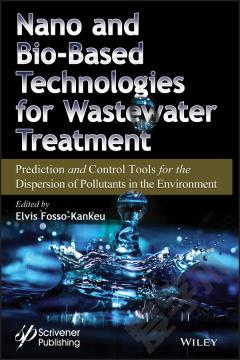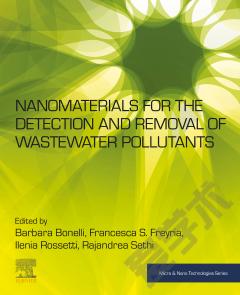Nano and Bio-Based Technologies for Wastewater Treatment —— Prediction and Control Tools for the Dispersion of Pollutants in the Environment
----- 用于废水处理的纳米和生物技术:环境中污染物分散的预测和控制工具
Over the past few decades the boom in the industrial sector has contributed to the release in the environment of pollutants that have no regulatory status and which may have significant impact on the health of animals and humans. These pollutants also refer as “emerging pollutants” are mostly aromatic compounds which derive from excretion of pharmaceutical, industrial effluents and municipal discharge. Some form of pollutions have also evolved, including the proliferation of acid mine drainage from oxidation or weathering of obsolete and unmanaged excavations around the world; this results mostly in the dispersion of inorganic pollutants in the environment at level surpassing the treatment capacity of conventional techniques. It is recurrent these days to find water treatment plants which no longer produce water that fits the purpose of domestic consumption based on newly established guidelines. This situation has prompted water authorities and researchers to develop tools for proper prediction and control of the dispersion of pollutants in the environment to ensure that appropriate measures are taken to prevent the occurrence of outbreaks due to sudden load of these pollutants in the water system. The chapters in this book cover a wide range of nano and bio-based techniques that have been designed for the real time detection of emerging contaminants in environmental water sources, geochemical models that are continuously improved for the prediction of inorganic contaminants migration from the mine solid wastes into ground and surface waters. Remediation strategies are also discussed and include effective techniques based on nanotechnology, advanced membrane filtration, oxidative and bio- degradation processes using various types of nanocatalysts, biocatalysts or supporting polymer matrices which are under advanced investigations for their implementation at large scale for the removal of recalcitrant pollutants from polluted water.This book is divided is two sections, the first section covers the occurrence of emerging pollutants in environmental water while the second section covers state of the art research on the removal of emerging pollutants from water using sustainable technologies. A total of 13 chapters addressing various topics related to the two sections are essentially based on recent development in the respective field which could have a significant impact on the enhancement of the performance of wastewater treatment plants around the world and especially in developing countries where access to clean and safe water remains a daily challenge
{{comment.content}}








 京公网安备 11010802027623号
京公网安备 11010802027623号